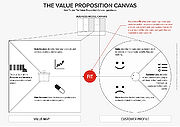Belbin's Team Roles
| Line 6: | Line 6: | ||
| − | == | + | ==History== |
| + | In 1969, Dr. Meredith Belbin was asked to investigate team performance alongside Roger Mottram, Bill Harston, and others. For this, Dr. Belbin and his colleagues decided for a business game as a framework to study the performance of teams. Here, the business game would produce tangible financial results, which could be used to measure performance and differentiate between successful teams and failing teams. While now having covered the output of a team, Dr. Belbin aimed at measuring the input in terms of individual team-member characteristics. Therefore, Dr. Belbin assembled a psychometric test battery consisting of a measure of reasoning ability, personality, and outlook. For this, the Critical Thinking Appraisal (CTA), 16 scales of the Cattell personality inventory, and the Personal Preference Questionaire was used. After three years of studies, a tendency of the more successful teams was discovered to be higher scores of on mental abilities as measured by the CTA and to have a particular set of personality characteristics. By use of these tools Dr. Belbin and his colleagues found the successful team member to have the traits of being practical, down to earth, disciplined, orderly and trusted [REF]. However, as team performance not solely rely on some specific traits, Dr. Belbin started to focus on the performance of teams which was assembled in different combinations regarding the profile generated from the previous tools. This led to the conclusion that people who scored high in all the tests had a habit of competing to an extend that would suppress team performance [REF]. From here, Dr. Belbin identified the essential types of contributions that gives balance to a team and enhanced performance. To give an indication of the different types of contributions a person can have, Dr. Belbin and his team created 8 ‘Team roles’ that were noticeable by particular patterns of psychometric scores in the different tests [REF]. Additionally, a ninth role “the specialist” was added later after obtaining experience from theory in the industry [Ref]. | ||
[[File:example.jpg|thumb|caption]] | [[File:example.jpg|thumb|caption]] | ||
Revision as of 22:42, 21 February 2019
Developed by André Agertoft Condamine
Contents |
Abstract
When dealing with Project Human resource management it is essential for a project manager to develop suitable project team. This process requires focus on not only developing the overall competencies of a team, but also team interaction and environment to enhance project performance. To cope with this, it is essential that a project team consist of diverse members that can carry out different team roles to boost synergetic performance. For this, Dr. Meredith Belbin studied the importance of team role for many years at Henley University. Here, Belbin developed different team roles based on nine years of empiric study of team analysis, games etc. The study resulted in the discovery of 9 different team roles. It turned out to be possible to describe the inner psychological dynamics of the person, and to describe what effects this would have, partly on the employees and partly on a team. Additionally, the study also showed that it could be predicted how a team will manage from the composition of the team. Belbin’s work led to a widely used set of tools, which can be used to analyse and diagnose project teams for further performance enhancement.
History
In 1969, Dr. Meredith Belbin was asked to investigate team performance alongside Roger Mottram, Bill Harston, and others. For this, Dr. Belbin and his colleagues decided for a business game as a framework to study the performance of teams. Here, the business game would produce tangible financial results, which could be used to measure performance and differentiate between successful teams and failing teams. While now having covered the output of a team, Dr. Belbin aimed at measuring the input in terms of individual team-member characteristics. Therefore, Dr. Belbin assembled a psychometric test battery consisting of a measure of reasoning ability, personality, and outlook. For this, the Critical Thinking Appraisal (CTA), 16 scales of the Cattell personality inventory, and the Personal Preference Questionaire was used. After three years of studies, a tendency of the more successful teams was discovered to be higher scores of on mental abilities as measured by the CTA and to have a particular set of personality characteristics. By use of these tools Dr. Belbin and his colleagues found the successful team member to have the traits of being practical, down to earth, disciplined, orderly and trusted [REF]. However, as team performance not solely rely on some specific traits, Dr. Belbin started to focus on the performance of teams which was assembled in different combinations regarding the profile generated from the previous tools. This led to the conclusion that people who scored high in all the tests had a habit of competing to an extend that would suppress team performance [REF]. From here, Dr. Belbin identified the essential types of contributions that gives balance to a team and enhanced performance. To give an indication of the different types of contributions a person can have, Dr. Belbin and his team created 8 ‘Team roles’ that were noticeable by particular patterns of psychometric scores in the different tests [REF]. Additionally, a ninth role “the specialist” was added later after obtaining experience from theory in the industry [Ref].
